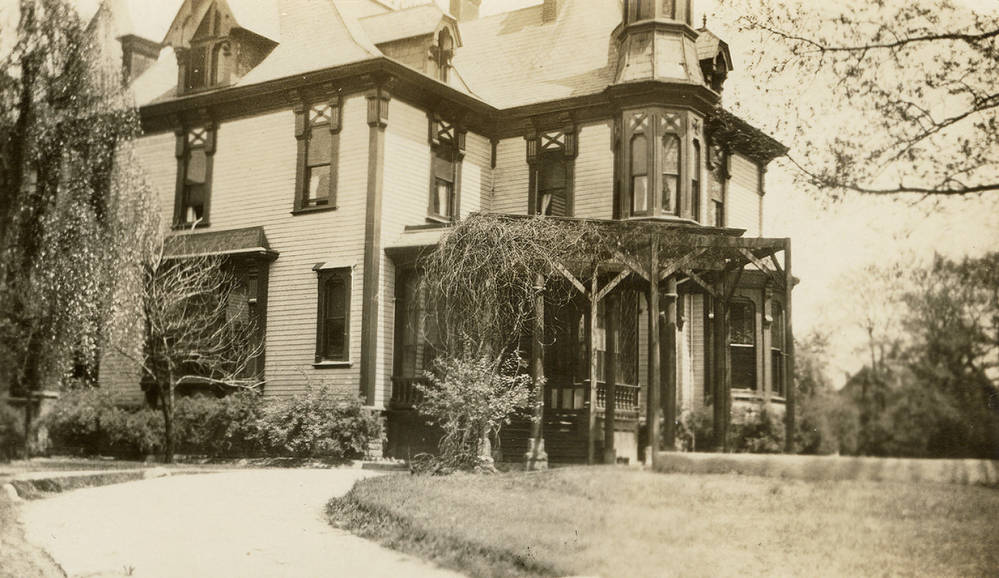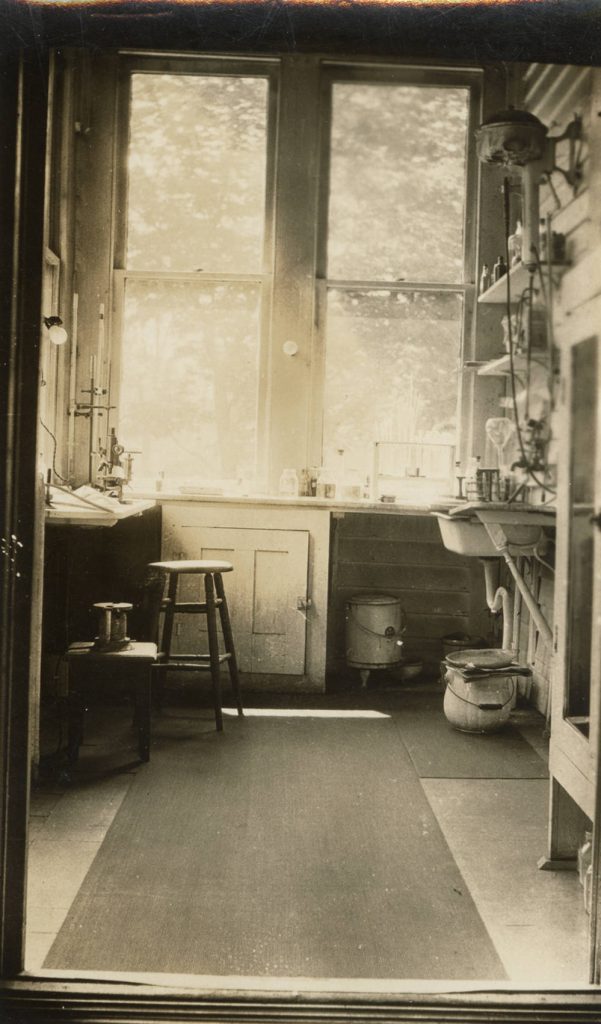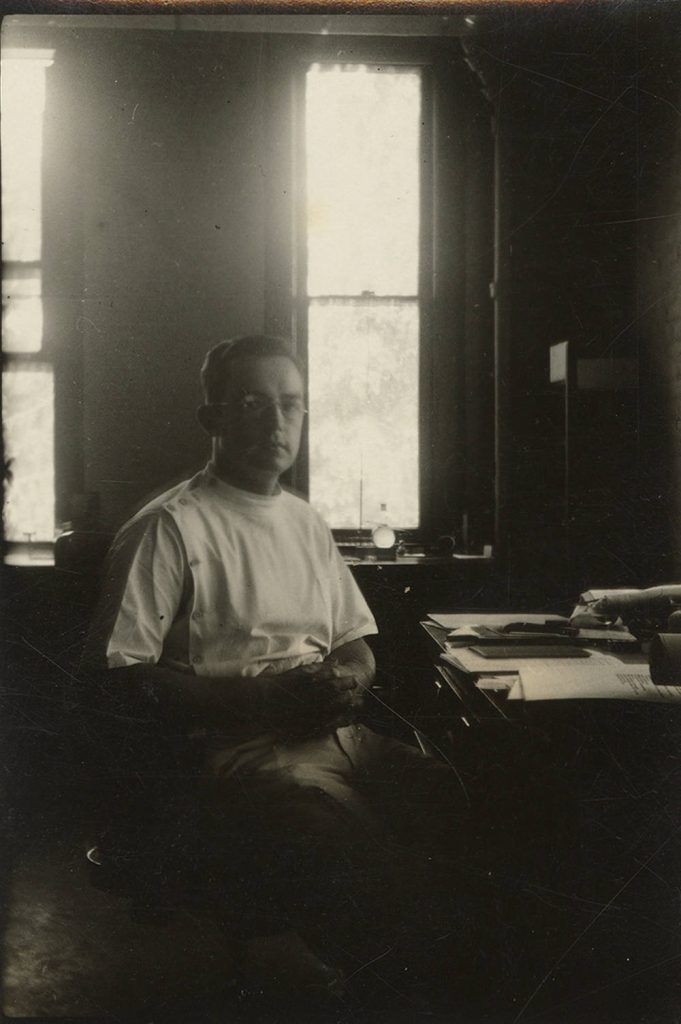In 1898, Norways Sanitarium became the second private psychiatric hospital established in Indianapolis. The hospital’s name, which was later changed to Norways Foundation Hospital, originates from the many Norway maple trees growing on the two-acre estate of Stoughton A. Fletcher (1831-1895) whose residence, built in 1870 at 1820 E. 10th Street, served as the first hospital building. The new hospital boasted ten beds—a number that doubled in the second year. By the end of the first decade, the hospital grew with the addition of two new buildings. A final building was added in 1946. By the hospital’s closing in 1957, it contained sixty-nine beds.

Albert E. Sterne, the first professor of nervous and mental disease at , founded the hospital and served as the first medical director. While at Norways, Sterne developed a technique for the treatment of neurasthenia (a condition that is characterized by physical and mental exhaustion). Sterne commissioned the construction of a cabinet in which the neurasthenic patient sat unclothed and whose body was bathed with “primeval” actinic rays produced by arc lamps and vacuum tubes while his or her head was bathed in air charged with ozone. This treatment purportedly decreased the time of recovery of a neurasthenic patient by half.

Norways Hospital also provided other state-of-the-art treatments for its patients. These treatments included the introduction of X-ray fluoroscopy in 1899 and brain surgery as early as 1910. therapy was introduced in 1937 and new techniques were developed for its administration. In 1938, Norways introduced the use of metrazol shock; electroconvulsive therapy started in 1940. Patients with mania were treated with paraldehyde and wet sheet packs. Still later, Norways used occupational therapy and music therapy to treat patients.
Like most psychiatric hospitals in the 21st century, the range of psychiatric diagnoses that doctors at Norways encountered included schizophrenia, manic depressive illness, and psychotic depression. Psychologists at Norways also worked with many patients suffering from postpartum depression and alcoholism, as well as several cases of bromide poisoning and brain injury.
In addition to treating patients, Norways offered training for future doctors and nurses. Philip B. Reed, MD, superintendent of Norways directed a residency in psychiatry for medical students from 1946-1957 when the hospital closed. The total number of residents at any one time ranged from one to seven but usually averaged about four. Although an inpatient psychiatric hospital, residents could see their long-term outpatients in their offices. A psychiatric nursing program began at Norways in 1947. An average of six to eighteen student nurses per year participated in the program. Social work student placements began in 1952.

Medical student externs also worked at Norways. Arthur B. Richter, one of Norways’s externs went on to found and direct the Department of Electrocardiography at St. Vincent’s Hospital. A great benefactor to the psychiatric department at Indiana University, he endowed the chair of the child psychiatry department, provided two scholarships in child psychiatry for senior medical students, and endowed the annual Arthur B. Richter Conference in Child Psychiatry.
By the 1950s, Norways faced competition for patients with . Not only did Methodist open a new Psychiatric Wing in 1952, but it was likely cheaper for patients too (Norway’s day rate in 1957 was $28.50 while the day rate for a psychiatric bed at a general hospital was $25). Despite this competition, Norways began planning for the construction of a new hospital to be located north of Methodist Hospital and even struck an agreement with Methodist to share facilities and training resources for new doctors. The plan for Norways’s new $1.6 million building, which received support from the Indianapolis Hospital Development Corporation, included 100 beds and a residence hall for 50 nurses.
The new building never materialized. The number of patients Norways provided care for each year in the mid-1950s hovered around 75, which did not warrant the construction of a new hospital next to its major competitor. Norways closed on October 1, 1957. The hospital donated the land on which Norways sat to the Marion County Child Guidance Clinic. Proceeds from the sale of Norways were given to the Indiana University School of Medicine Department of Psychiatry. The remaining patients at Norways were moved to Methodist Hospital and the Wabash Valley Sanitarium in Lafayette, Indiana where Dr. Reed, who had been Norways’s medical director since 1937 relocated.

Help improve this entry
Contribute information, offer corrections, suggest images.
You can also recommend new entries related to this topic.